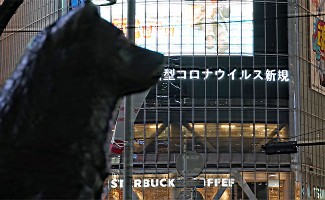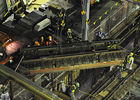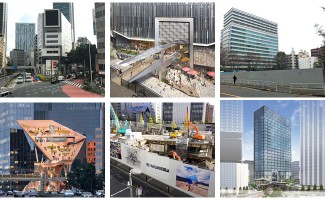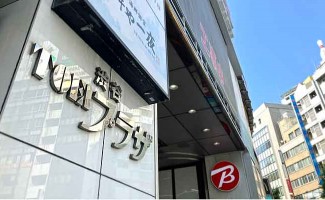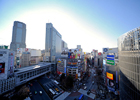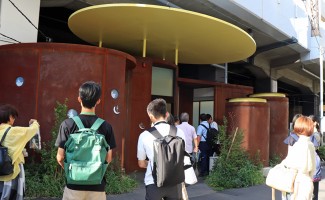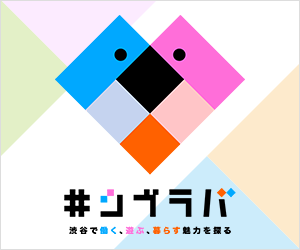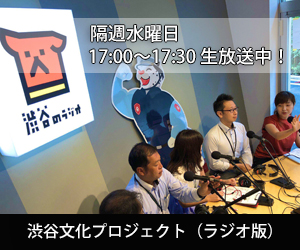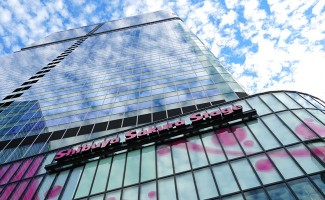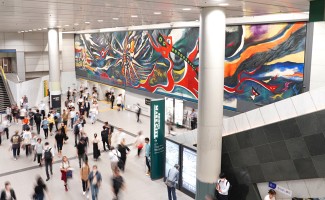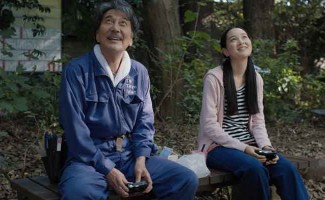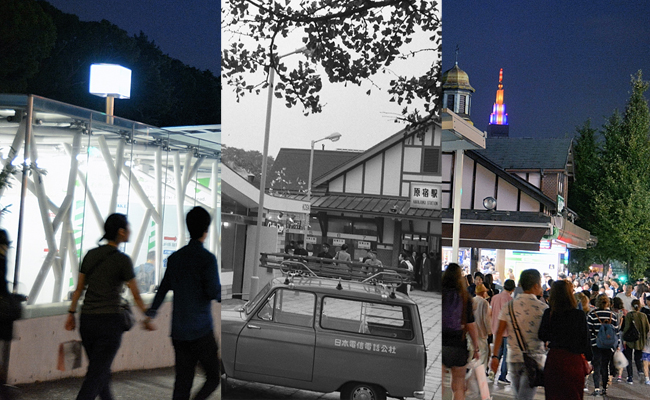
Shibuya on that day, looking back from the photographs from now on vol.2 vol.2
Theme: "Harajuku station to refrain from the Olympics"
"Shibuya of that day" is a photo gallery that looks back on the history and transition of Shibuya's town from the photos of Shibuya in "Old" and "Now". Looking back over the old photos again, you can see the cityscape of Shibuya at the time, the lives of people, fashions of fashion, and so on. And after various transitions, you can see well that you are connected to Shibuya today. In this project, I will compare the photos of Shibuya of "old" and "now", looking back on the old steps in the city of Shibuya and wanting to find "new discoveries" and "awareness" from the old photos. For the second time this time, I would like to pay attention to the scenery of "Harajuku station" where preparation is going steadily preparations ahead of the holding of the Tokyo Olympic Games in 1964 (Showa 39).
Harajuku station originally started as a station on the Japan Railway Shinagawa Line (the present YAMANOTE LINE and Akabane Line) in 1906 (Meiji 39), and renamed YAMANOTE LINE in 1909 (Meiji 42). Moved home near Shibuya Station in 1924 (Tasho 13), the year after the Great Kanto Earthquake, and the second station building, the current station building, was completed. After that, the station built over the Tokyo air raid was 93 years old, and is the oldest among the existing wooden stations in Tokyo. Mr. Atsushi Hasegawa, an engineer of the Ministry of Railways at the time, was designed. One of the young technologists who were influenced by European architecture, such as the second-generation Yokohama Station (completed in 1916) made of bricks that were destroyed in the Great Kanto Earthquake. The station building which adopted the wooden architecture called "half timber style" of northern Europe is exposed as a decoration material as it is, without concealing the frame such as pillars, beams, bars and windows. The frame is finished with white stucco and has a small spire roof with a weathercock. Harajuku is bustling with many young people today, but the lovely station building that makes you feel Taisho romance is widely loved across generations as a "symbol of town".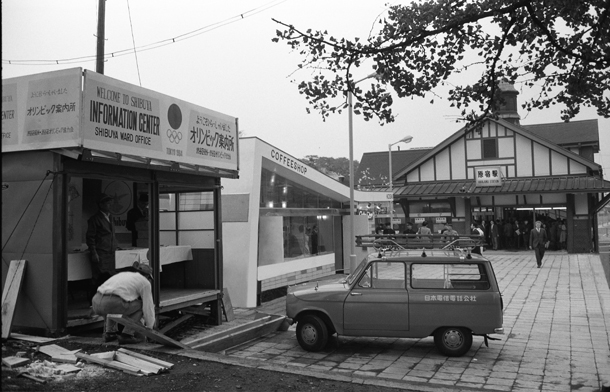 Photo provision = Shibuya Ward local photograph preservation party
Photo provision = Shibuya Ward local photograph preservation party
Well, the above picture looking back this time is the scenery in front of Harajuku station which refrains from the "Tokyo Olympics" of October 10, 1964 opening in a few days.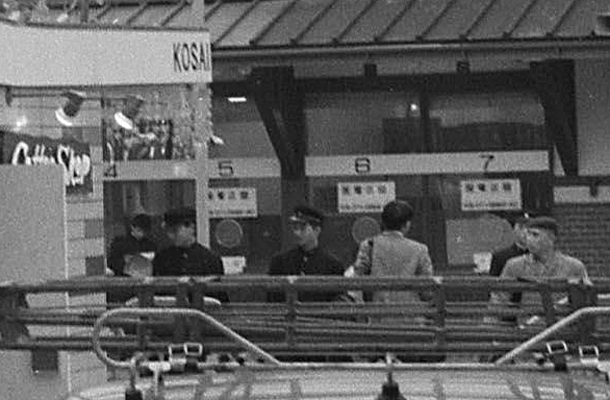 It is an enlargement of the center of the picture. Photo provision = Shibuya Ward local photograph preservation party
It is an enlargement of the center of the picture. Photo provision = Shibuya Ward local photograph preservation party
Although I can see the appearance of the station building of Harajuku station which is unchanged now, when I look back at the back of the photo, there are seven "ticket buddy" 4, 5 ... on the left side of the building. Naturally, it is not an automatic ticket vending machine like the present. You can also see the students in school runs and school hats.
一番始めの写真手前には、小さなボックス型の建物があるが、その看板に「WELCOME TO SHIBUYA INFORMATION CENTER SHIBUYA WARD OFFICE(ようこそいらっしゃいました オリンピック案内所 渋谷区役所・渋谷区オリンピック協力会)」と書かれている。選手村をはじめ、代々木競技場、国立競技場などの最寄りである原宿駅は、渋谷駅と同じく東京五輪会場へのアクセス拠点の一つ。国内外から訪れる多くの観戦者や観光客、関係者に向けて、「オリンピック案内所」の設営が進められているのが分かる。
Before the information office, the light car "Mitsubishi 360 light bang)" is stopped. The door knob is attached to the front, and it is now found to be an unusual "front opening door". At that time, my car was still a flower of Takamine, but it was also a time when the use of mini vehicles such as "Mitsubishi 360 light bang" "Suzu Lite van" as a commercial vehicle began to gradually increase. From the latter half of the 1960s, the general public started a private car boom following the Izanagi boom after the Olympics. Opposition to the Olympics also pushed forward the improvement of main roads and expressways, etc. Yutaka Sato, a photographer who knew then, said, "A place where light vans can be used is quite a big company, and light tricycle cars were often used in general small-scale businesses and shops, especially" Miette of Daihatsu " I remember the three-wheeled vehicle running well in town. "
If you look closely at the body of the light van, the character of Nippon Telegraph and Public Telephone Corporation (now NTT) Aoyama telephone office is written, probably the man who is crouching in front of the building is a telephone staff member, It is imagined whether it is under construction to draw a call to. Also, because of monochrome photographs, the color of the car is not certain, but according to Mr. Sato, "The Electric Utility company's car was certainly green".
案内所の隣には「COFFEESHOP(コーヒーショップ)」と書かれた白い建物がある。大きな窓ガラス、斜めにデザインされた屋根など、現在のカフェと遜色ないオシャレな雰囲気が漂っているが、こちらも五輪に向けて建てられた店舗なのだろう。駅側のカフェ屋根の先には「KOSAI…」という文字が僅かに見えるが、これはおそらく「KOSAIKAI(鉄道弘済会)」と書かれていると推測される。鉄道弘済会は、旧国鉄の勤続退職者やその家族・遺族および殉職者の遺族を救済するための財団法人で、国鉄時代にはキヨスクなども直営していた。現在、JRのエキナカには「BECK'S COFFEE SHOP」などの直営コーヒーショップがあるが、五輪に向けて弘済会が運営していたと思われる「COFFEESHOP」はその先駆的なショップと言えるだろう。数日後には多くの人びとと歓喜に包まれるだろう原宿駅前で、開幕に向けて着々と準備が進んでいる様子がうかがえる貴重な一枚と言える。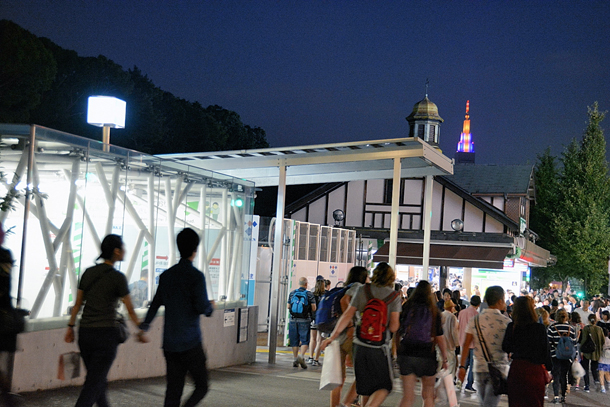 Shooting = Yutaka Sato
Shooting = Yutaka Sato
The next photo is the scenery of "Present Harajuku Ekimae". The state of the city where a lot of people go and go is showing a bustling activity like the Olympics every day. The big difference with the half century ago is not only the amount of people, along with the extension between Chiyoda Line Chigagaseki-Yoyogi Park in 1972 (Showa 47), Meiji Jingumae Station opened and Harajuku station Omotesando exit before Exit 2 Is newly established. That's the part of the light that glows white in front of the photo. The FUKU-TOSHIN LINE began in 2008, and the number of passengers has increased more than before as a transfer station with JR. There is a convenience store called "NEWDAYS" operated by " JR East retail network", which takes over the business from Kosaikai, between subway No. 2 exit and Harajuku station Omotesando exit, but now a white temporary enclosure for construction is provided . This is due to a large-scale improvement work at Harajuku Station. While it is about two and a half years until Tokyo Olympics, JR East has announced plans to upgrade the current Harajuku station by 2020 and to build a two-tiered station building on the track and home (JR East announcement press release). Indeed, considering the holding of the Olympics, it is impossible to secure sufficient capacity at existing station buildings and homes, and it is expected to be very crowded. In order to solve these problems, it is essential to add concourse, ticket gates, toilets, elevators and the like. On the other hand, Shibuya citizens etc. are symbols of Harajuku, there are many voices that endanger the survival of the oldest wooden station building in Tokyo. At first, the new station building will be constructed adjacent to the existing station building, but whether to survive the historic building or not will be decided after considering the Olympics.
Another difference between old and old pictures is the volume of dense trees of "Shinto no Mori (Mori) (forest)" seen from the second exit. As you know, the forest of Meiji Jingu is an artificial forest planted in 1920 (Taisho 9), but there was not enough volume to appear in the picture at the time of the last Olympic Games. You can also feel the length of the years from the growth of the forest. "100 Years of Forest" and "100 Year's Station Building", it seems to be quite similar to the city of young people who are leading the trend, but that gap can also be said as the charm of the city of Harajuku. I am concerned about the end of the existing station building due to large-scale improvement work, but I would like you to seek a way to preserve it as a "symbol of the city" somehow.
>"Shibuya of that day" vol.1 theme: "Yoyogi Stadium" (published November 21, 2017)
At Shibuya culture's sister site "Shibuya Photo Museum"Special feature "Shibuya's transfiguration Tokyo Olympics 1964"Posting. Please also take a look there also by all means.

Editorial department · Fuji Itakashi
Shibuya registrar. In addition to Shibuya of Culture information, seasonal news and topics, it will spell write that feel every day.

